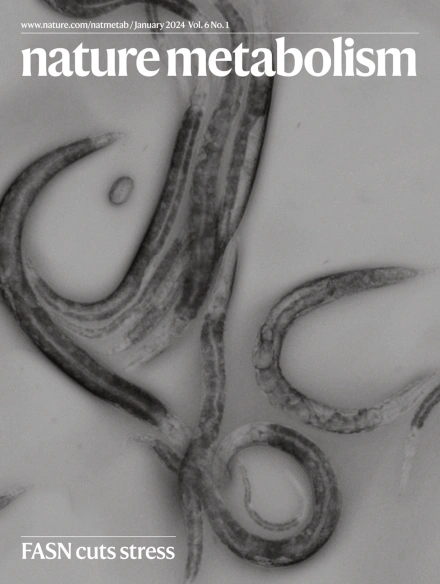多面线粒体:线粒体科学超越功能和功能障碍
IF 20.8
1区 医学
Q1 ENDOCRINOLOGY & METABOLISM
引用次数: 21
摘要
线粒体具有特定细胞类型的表型,执行数十种相互关联的功能,并经历动态且通常可逆的生理调整。鉴于线粒体的多功能性和可塑性,"线粒体功能 "和 "线粒体功能障碍 "这两个常用术语是误导性的错误称谓,未能反映线粒体生物学的复杂性。为了提高线粒体科学的概念和实验特异性,我们提出了一个术语系统,区分(1) 依赖细胞的特性、(2) 分子特征、(3) 活动、(4) 功能和 (5) 行为。一个能准确捕捉线粒体多面性的分层术语系统将实现三个重要成果。在我们向下一代线粒体生物学家传授知识时,它将传达线粒体更全面的信息,最大限度地推动线粒体科学领域的快速发展,并促进与其他学科的协同作用。提高线粒体科学语言的特异性是完善我们对线粒体这一独特细胞器家族促进细胞和机体健康机制的理解的一个步骤。本视角的作者们认为,常用的术语 "线粒体功能 "和 "线粒体功能障碍 "并不能公正地反映细胞内线粒体的各种特征、活动、功能和行为,因此呼吁该领域在线粒体生物学方面采用更具体的术语。本文章由计算机程序翻译,如有差异,请以英文原文为准。

Multifaceted mitochondria: moving mitochondrial science beyond function and dysfunction
Mitochondria have cell-type specific phenotypes, perform dozens of interconnected functions and undergo dynamic and often reversible physiological recalibrations. Given their multifunctional and malleable nature, the frequently used terms ‘mitochondrial function’ and ‘mitochondrial dysfunction’ are misleading misnomers that fail to capture the complexity of mitochondrial biology. To increase the conceptual and experimental specificity in mitochondrial science, we propose a terminology system that distinguishes between (1) cell-dependent properties, (2) molecular features, (3) activities, (4) functions and (5) behaviours. A hierarchical terminology system that accurately captures the multifaceted nature of mitochondria will achieve three important outcomes. It will convey a more holistic picture of mitochondria as we teach the next generations of mitochondrial biologists, maximize progress in the rapidly expanding field of mitochondrial science, and also facilitate synergy with other disciplines. Improving specificity in the language around mitochondrial science is a step towards refining our understanding of the mechanisms by which this unique family of organelles contributes to cellular and organismal health. The authors of this Perspective argue that the commonly used terms ‘mitochondrial function’ and ‘mitochondrial dysfunction’ do not do justice to the diverse mitochondrial features, activities, functions and behaviours within cells, and thus call for the field to adopt more specific terminology in the context of mitochondrial biology.
求助全文
通过发布文献求助,成功后即可免费获取论文全文。
去求助
来源期刊

Nature metabolism
ENDOCRINOLOGY & METABOLISM-
CiteScore
27.50
自引率
2.40%
发文量
170
期刊介绍:
Nature Metabolism is a peer-reviewed scientific journal that covers a broad range of topics in metabolism research. It aims to advance the understanding of metabolic and homeostatic processes at a cellular and physiological level. The journal publishes research from various fields, including fundamental cell biology, basic biomedical and translational research, and integrative physiology. It focuses on how cellular metabolism affects cellular function, the physiology and homeostasis of organs and tissues, and the regulation of organismal energy homeostasis. It also investigates the molecular pathophysiology of metabolic diseases such as diabetes and obesity, as well as their treatment. Nature Metabolism follows the standards of other Nature-branded journals, with a dedicated team of professional editors, rigorous peer-review process, high standards of copy-editing and production, swift publication, and editorial independence. The journal has a high impact factor, has a certain influence in the international area, and is deeply concerned and cited by the majority of scholars.
 求助内容:
求助内容: 应助结果提醒方式:
应助结果提醒方式:


